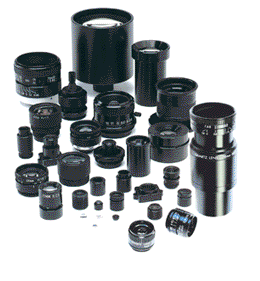High resolution lenses for machine vision — standard and custom lens design
Digital Imaging Lends Itself To Healthcare Advancements
High Resolution Lenses for machine vision, instrumentation, inspection and vibration-sensitive applications. Standard and custom hi-res lens assemblies.

Digital Imaging
As medical advances go, digital imaging systems have lead to large strides in the care and diagnosis of patients. Digital imaging is the creation of visual images of the body including organs and tissues to enhance a physician’s ability to provide a medical diagnosis. In the medical field, digital imagine incorporates magnetic fields, high frequency sound waves, and gamma rays in the form of X-ray technology to capture and create digital images of internal organs and bones.
X-Rays are the most commonly used digital imaging system; used to capture radiological images of the body including the bones, liver, stomach… any number of internal organs. An X-Ray allows a doctor to see the organs without having to do an invasive procedure. The density of the organ being captured allows the radiologist and physician to differentiate between irregular structures including broken bones an tumors and normal organs and bone structures.
Through the use of fluoroscopy, a radiologist is able to capture an X-ray image over an extended or specific time frame, ie, the assessment of a heart beat or the movement of blood through the veins. Fluoroscopy is a medical diagnostic tool that is crucial to diagnosing irregular heartbeats and also in diagnosis of gastrointestinal systems. With a gastrointestinal fluoroscopy test, the patient will typically ingest barium as a way to intensify and contrast the organ under review.
Sonography or ultrasounds use high frequency sound waves and are most typically used in monitoring the development of a fetus. With sonography, a tranducer is placed on the area of the body that is to be imaged; this device transmits sound waves that will travel through the skin to the organ under investigation. The echoes transmitted by the transducer will then be transformed into an anatomical image that the radiology technologist will review on a separate computer screen.
An MRI (magnetic resonance imaging) device utilizes a high-powered magnet and radio frequency signals to capture and create images. This equipment is typically used in the diagnosis of brain and spine injuries as well as bone, chest and soft tissue abnormalities. A computed tomography (CT) combines both computer and X-Ray technologies to capture and produce two-dimensional anatomical images.
Gamma rays are used in the diagnostic imaging in nuclear medicine practices. With this type of imaging the patient is introduced to radioactive compounds that then produce gamma rays before the imaging process begins. A camera can detect the gamma rays and will capture that data and create an image of the body part under investigation.
Digital imaging systems, and the equipment provided to medical facilities by companies such as Universe Technologies are crucial tools in helping medical professionals diagnosis and formulate treatment plans for patients.